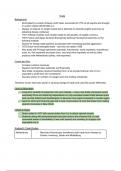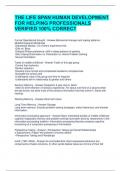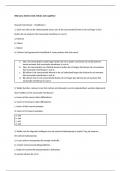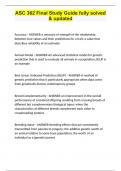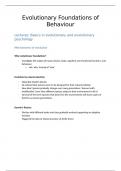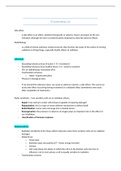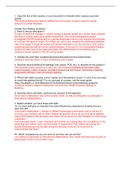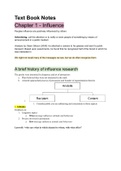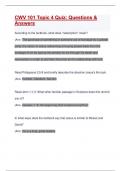Trade
Background
- Dominated by London-Antwerp cloth trade: accounted for 75% of all exports and brought
in custom duties £35-50,000 p.a.
- Danger of reliance on single market led to attempts to diversify english economy by
attracting foreign craftsmen
- 1551 Antwerp markets were shaken badly by devaluation of english currency
- 1557 France and Spain declared themselves bankrupt having borrowed lots on the
Antwerp markets
- Search for foreign trade partners accelerated with increasing spanish aggression
- 1572 Dutch revolt disrupted trade →port shut to traders 1585
- Also trade with Portugal (pilchards exported), france(wine, wood imported), scandinavia
(coal, tin, fish imported) and spain (iron, wool and wine imported) as well as other
products with Netherlands (barley, malt exported)
Crown and Gov
- Increase customs revenues
- Support merchant class politically and financially
- New trade companies received backing from Liz as private financier who in turn
expected to profit from her investments
- Success shown in number of voyages and new trading companies
Therefore Crown had main power in causing change to trade and used this power effectively.
Long vs Short term
- Long-term benefits of expansion into new markets →many new trade companies would
eventually thrive and declining dependance on only european-based trade allowed ports
such as Hull, Bristol and Southampton to become more signif compared to London again
- need for short term financial gain led to lack of prevention of men like Drake from raiding
spanish monopoly in New World
Linked to Spain
- Drake sailed in 1577 with secret orders from Liz to attack spanish empire
- However along with aforementioned reluctant actions this showed that Liz was
somewhat aware of inevitability of war with spanish but unwilling to engage until
impossible not to
England’s Trade Routes
Netherlands - Merchant Adventurers transferred cloth trade from Antwerp to
Emden, Hamburg, Stade and Middelburg
, Russia - 1553: Willoughby and Chancellor crossed arctic and travelled
overland to Moscow attempting to find North-East passage to
Asia.
- From 1558 overland trading expeditions under Anthony
Jennkinson travelled through Russia to Asia and the Muscovy
Trading Company - backed by court heavily - exported cloth,
metals, food, imported wax, furs and more. Trade worth approx
£25,000 p.a.
Baltic - Eastland company est. 1579 imported goods (naval supplies
mostly)
- 75% english exports to Baltic were cloth
Mediterranean - 1573 onwards due to dispute between Venice and Ottoman
Empire, England could import silk, spices and oils from med
- 1592 companies trading with venice and those with ottomans
formed Levant Company with traded mainly cloth for silk but also
lead and tin for carpets
Asia - Growing domestic demand for luxury goods such as sugar and
spices
- 1574, Martin Frobisher reached Baffin Island (Canada) believing
he’d found the North-Western passage to Asia
- 1587 John Davis reached Greenland
- No financial gain but did provide geographical info about North
America (long-term)
India - 1583 John Newberry and Ralph Fitch travelled overland to India
and established East India Company
Advantages:
- All four companies were joint-stock companies, owned by shareholders, so provided a
model for later organisations as capitalism developed.
- Exports carried further afield
Disadvantages:
- Despite the establishment of new trade routes, 74% of all English imports still came from
HRE, Spain and the Netherlands.
- The English Maritime Enterprise was more concerned with illegal trade in the ‘New
World’ than with legal trade in the East
- English financial institutions were much less sophisticated than those in HRE or
Netherlands
Background
- Dominated by London-Antwerp cloth trade: accounted for 75% of all exports and brought
in custom duties £35-50,000 p.a.
- Danger of reliance on single market led to attempts to diversify english economy by
attracting foreign craftsmen
- 1551 Antwerp markets were shaken badly by devaluation of english currency
- 1557 France and Spain declared themselves bankrupt having borrowed lots on the
Antwerp markets
- Search for foreign trade partners accelerated with increasing spanish aggression
- 1572 Dutch revolt disrupted trade →port shut to traders 1585
- Also trade with Portugal (pilchards exported), france(wine, wood imported), scandinavia
(coal, tin, fish imported) and spain (iron, wool and wine imported) as well as other
products with Netherlands (barley, malt exported)
Crown and Gov
- Increase customs revenues
- Support merchant class politically and financially
- New trade companies received backing from Liz as private financier who in turn
expected to profit from her investments
- Success shown in number of voyages and new trading companies
Therefore Crown had main power in causing change to trade and used this power effectively.
Long vs Short term
- Long-term benefits of expansion into new markets →many new trade companies would
eventually thrive and declining dependance on only european-based trade allowed ports
such as Hull, Bristol and Southampton to become more signif compared to London again
- need for short term financial gain led to lack of prevention of men like Drake from raiding
spanish monopoly in New World
Linked to Spain
- Drake sailed in 1577 with secret orders from Liz to attack spanish empire
- However along with aforementioned reluctant actions this showed that Liz was
somewhat aware of inevitability of war with spanish but unwilling to engage until
impossible not to
England’s Trade Routes
Netherlands - Merchant Adventurers transferred cloth trade from Antwerp to
Emden, Hamburg, Stade and Middelburg
, Russia - 1553: Willoughby and Chancellor crossed arctic and travelled
overland to Moscow attempting to find North-East passage to
Asia.
- From 1558 overland trading expeditions under Anthony
Jennkinson travelled through Russia to Asia and the Muscovy
Trading Company - backed by court heavily - exported cloth,
metals, food, imported wax, furs and more. Trade worth approx
£25,000 p.a.
Baltic - Eastland company est. 1579 imported goods (naval supplies
mostly)
- 75% english exports to Baltic were cloth
Mediterranean - 1573 onwards due to dispute between Venice and Ottoman
Empire, England could import silk, spices and oils from med
- 1592 companies trading with venice and those with ottomans
formed Levant Company with traded mainly cloth for silk but also
lead and tin for carpets
Asia - Growing domestic demand for luxury goods such as sugar and
spices
- 1574, Martin Frobisher reached Baffin Island (Canada) believing
he’d found the North-Western passage to Asia
- 1587 John Davis reached Greenland
- No financial gain but did provide geographical info about North
America (long-term)
India - 1583 John Newberry and Ralph Fitch travelled overland to India
and established East India Company
Advantages:
- All four companies were joint-stock companies, owned by shareholders, so provided a
model for later organisations as capitalism developed.
- Exports carried further afield
Disadvantages:
- Despite the establishment of new trade routes, 74% of all English imports still came from
HRE, Spain and the Netherlands.
- The English Maritime Enterprise was more concerned with illegal trade in the ‘New
World’ than with legal trade in the East
- English financial institutions were much less sophisticated than those in HRE or
Netherlands

